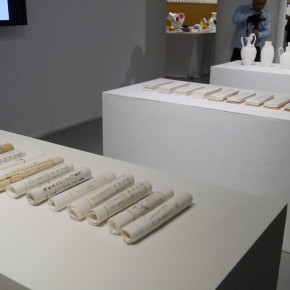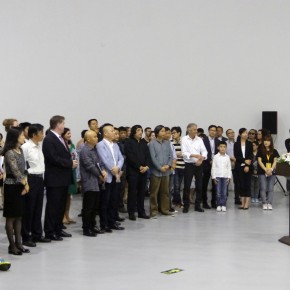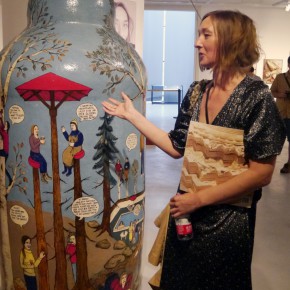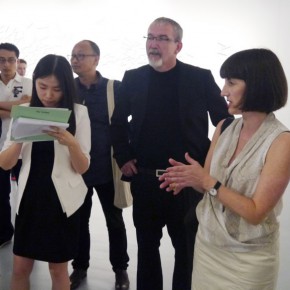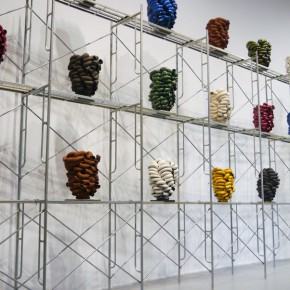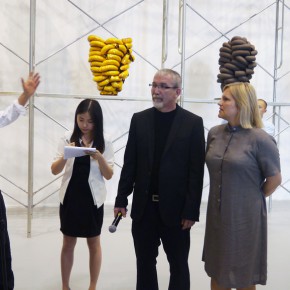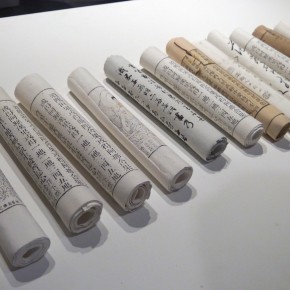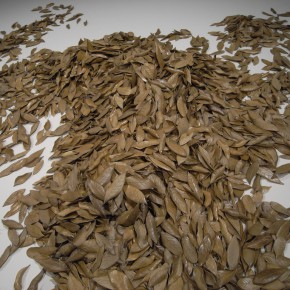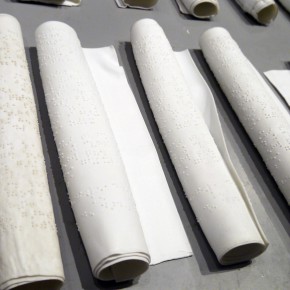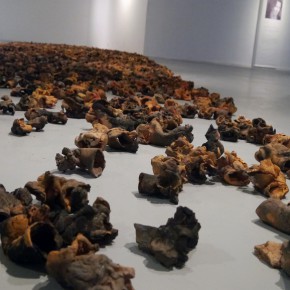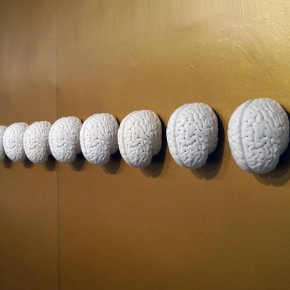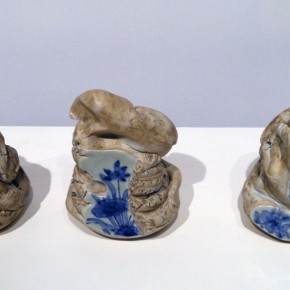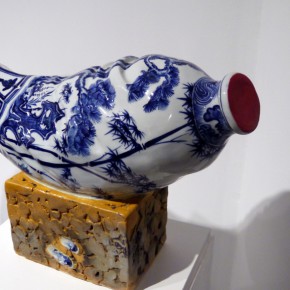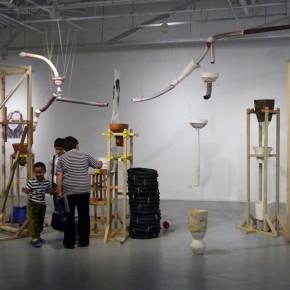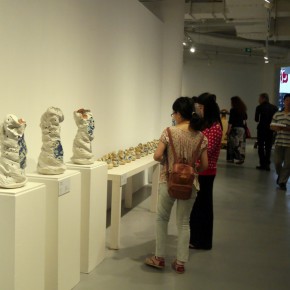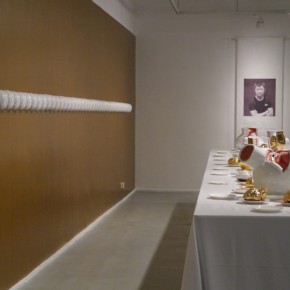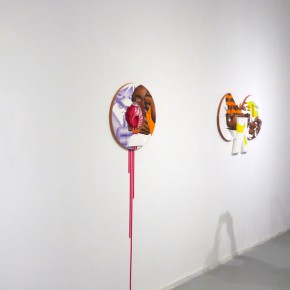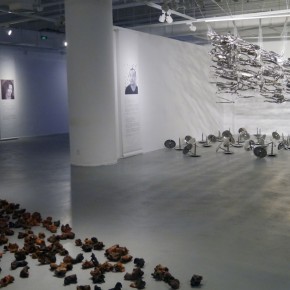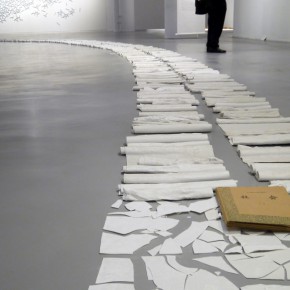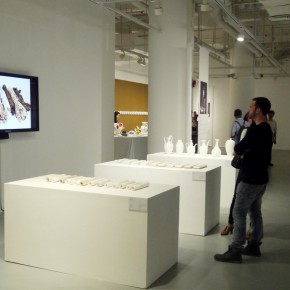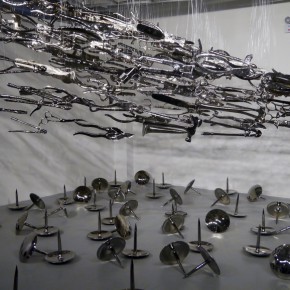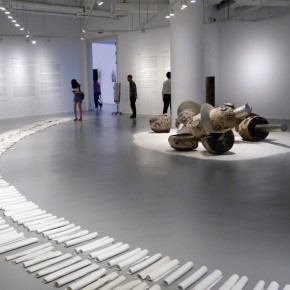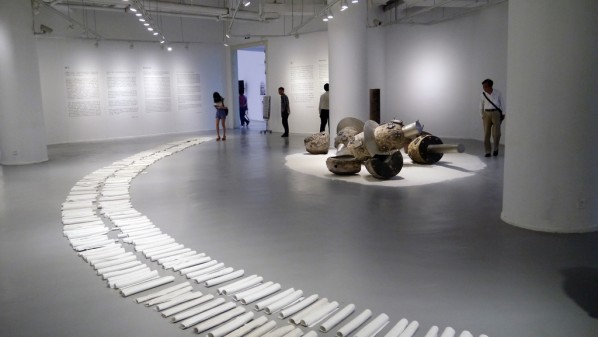
On May 24, 2014, jointly supported by Suzhou Jinji Lake Art Museum, Norwegian Crafts, and KODE Art Museum of Bergen, “Beyond G(I)aze” Sino-Norwegian Contemporary Ceramic Art Exhibition opened at the Suzhou Jinji Lake Art Museum, the exhibition has also received support from the Royal Norwegian Ministry of Foreign Affairs, the Royal Norwegian Embassy in Beijing, the Norwegian Consulate General in Shanghai and Bergen Municipality. It is a contemporary art exchanging exhibition jointly planned by Chinese curators Feng Boyi, Wang Dong, and Norwegian curators Heidi Bjorgan, Bjorn Inge Follevaag, featuring a total of 34 artworks by 15 artists from the two countries. Ceramics are the carriers of the works on display at the exhibition, revealing the aesthetic of contemporary ceramic art of the two countries after contemporary artistic languages were integrated into the traditional ceramic arts.
Ceramic art is a Chinese cultural quintessence, encompassing thousands of years of history and experiences, whereas we think of the Norwegian ceramic tradition as substantially shorter, ceramics were exported to the Nordic Norway in the Ming and Qing dynasties, which greatly impacted on the local handcrafts and daily life, and a lot of Norwegian museums and art museums collect Chinese ceramic artworks, while a lot of Norwegian contemporary artists also use ceramic art in their artistic creations. The exhibition theme “Beyond G(I)aze” is a reference and restriction on the “shape” and “system” of the creation itself, meanwhile thinking and analyzing the ceramic culture of the contemporary art creation by using ceramics as the medium.
The exhibition is a dialogue and interaction by means of communication between Chinese and Norwegian artists, together they discuss the different transformations of the two countries’ artists by using the ceramic medium to create within contemporary culture, while the exhibition press conference was also organized in the form of an interaction, and the Sino-Norwegian curators led the artists to individually interpret their art creation to the guests and the media.
Inspired by distorted human bodies, Norwegian artist Torjorn Kvasbo created the work “Stack”, showcasing the overlapping and integration of the tradition and modern. Lu Pinchang’s work “Touch the world” has a new interpretation of the book “Society” on the ceramics in the form of Braille, on the one hand, it showcases that blind people use touch to understand society, and it is also a reflection on visuals, he hopes that people can through cognition begin to understand society. Liu Jianhu’s work “The End of 2012” is similar to the lattice pattern of Chinese garden architecture, destructing and reconstructing the fixed order and performing a form of abstract beauty. Ingrid Askeland’s work “Why Drink of a Glass When You Can Drink from the Bottle” integrates the mind set of the artist in regards the ceramic “beer bottle”, to perform within the Norwegian beer culture. Huang Huayi’s work closely combines Chinese traditional culture of blue and white porcelain and contemporary ceramic language, reflecting the artist’s inherited and developing traditional ceramic skills.
Curator Feng Boyi said China and Norway jointly planned the exhibition for the purpose of communication and dialogue, it was a communication between China and Norway, the artists of the two countries, the curators, and even different Chinese and Norwegian institutes. It presented the 15 artists’ works which weren’t traditional ceramic works, but were processed using new visual arts, together with strong individual creative symbols, undergoing different art experiments and expressing ceramic material, and the related culture, directly referred to the noumenon of ceramic culture, touching the relationship between human and clay, to present the visual appearance of the ceramic culture as a kind of historical and cultural symbol in the contemporary art system, which is also a focus of the exhibition.
The exhibition will last until August 23, 2015, and will then be located at KODE, Art Museum of Bergen.
Text and photo by Zhang Wenzhi, translated by Chen Peihua and edited by Sue/ CAFA ART INFO


